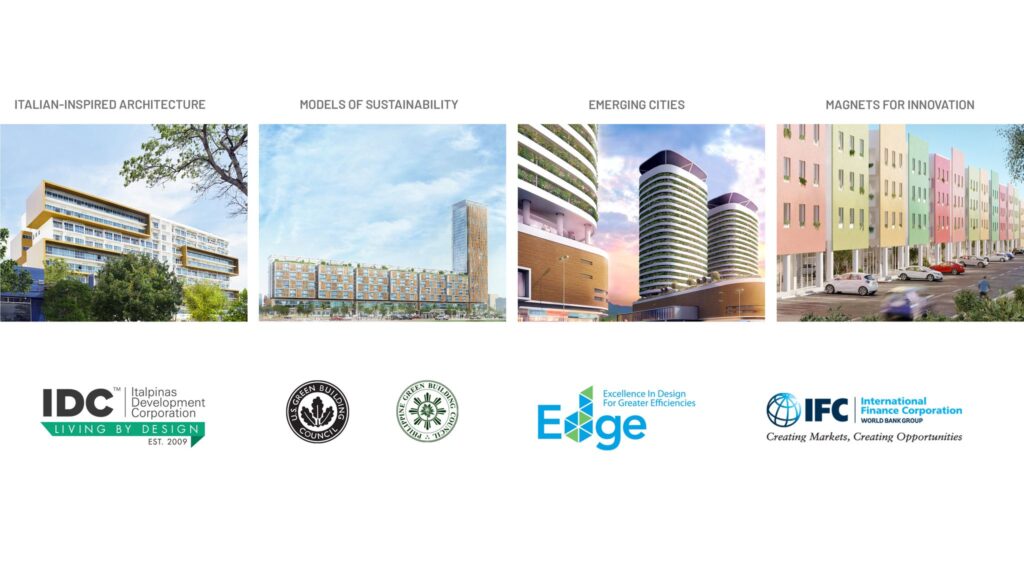Sustainable Real Estate: A Holistic Approach to Building for the Future – IDC

Sustainable real estate refers to the design, construction, and operation of buildings and other built environments that minimize their negative impact on the environment while also improving the well-being of the people who live and work in them.
The concept of sustainable real estate has become increasingly important in recent years as concerns over climate change, resource depletion, and environmental degradation have grown. In this essay, we will explore the importance of sustainable real estate and some of the key practices that are used to achieve it.
One of the primary reasons why sustainable real estate is important is its potential to mitigate the negative impact of buildings on the environment. Buildings are responsible for a significant portion of global greenhouse gas emissions, primarily from the energy used for heating, cooling, and lighting. By reducing energy consumption through the use of efficient building systems and the integration of renewable energy sources, sustainable real estate can significantly reduce the carbon footprint of buildings.

Sustainable real estate also promotes the responsible use of natural resources, including water and land. By implementing water conservation measures, such as low-flow fixtures and rainwater harvesting systems, buildings can reduce their demand for freshwater and protect this valuable resource. Additionally, sustainable real estate can reduce the amount of land required for development through the use of high-density building designs and the preservation of green spaces.
In addition to its environmental benefits, sustainable real estate can also have a positive impact on the health and well-being of building occupants. Sustainable buildings are designed to maximize natural lighting and ventilation, which can improve indoor air quality and reduce the risk of respiratory problems. Additionally, sustainable buildings often use environmentally friendly building materials, which can reduce exposure to harmful chemicals and toxins.
To achieve sustainable real estate, a number of key practices are used. One important practice is the use of environmentally friendly building materials, such as low-emission paints, insulation, and flooring. Another key practice is the incorporation of green infrastructure, such as green roofs and walls, which can help to reduce the urban heat island effect and provide additional green space in urban areas.
Another important practice is the use of energy-efficient building systems, such as lighting, heating, and cooling systems. By using energy-efficient technologies, buildings can reduce their energy consumption and greenhouse gas emissions, while also lowering operating costs over the long term. Additionally, the use of renewable energy sources such as solar and wind power can further reduce the environmental impact of buildings while also providing a reliable source of energy.

Achieving sustainable real estate requires a holistic approach that encompasses design, construction, and operation. Here are some ways to achieve sustainable real estate:
- Sustainable Design: Sustainable design involves incorporating environmentally friendly and energy-efficient elements into the design of a building. This includes optimizing the orientation of the building to maximize natural light and reduce heat gain, using high-performance insulation and glazing, and incorporating green spaces and green roofs to reduce the urban heat island effect.
- Energy Efficiency: Buildings consume a significant amount of energy for heating, cooling, and lighting. By using energy-efficient building systems and appliances, such as efficient lighting and HVAC systems, energy consumption can be reduced, resulting in lower utility bills and fewer carbon emissions.
- Water Conservation: Water is a scarce resource, and buildings consume a significant amount of it. Implementing water-efficient technologies, such as low-flow toilets and faucets, rainwater harvesting systems, and greywater recycling systems can help reduce water consumption and conserve this valuable resource.
- Use of Renewable Energy: Renewable energy sources, such as solar and wind power, can be used to power buildings, reducing reliance on fossil fuels and reducing greenhouse gas emissions.
- Green Building Materials: The use of environmentally friendly building materials, such as sustainable wood products, low-emission paints and finishes, and recycled materials, can help reduce the environmental impact of buildings.
- Waste Reduction: Reducing waste generation and increasing recycling and composting can help reduce the amount of waste sent to landfills and reduce the environmental impact of building operations.
- Indoor Air Quality: Improving indoor air quality through the use of non-toxic materials, proper ventilation, and air filtration systems can improve occupant health and comfort.
- Life-Cycle Assessment: Conducting a life-cycle assessment of a building can help identify areas for improvement and ensure that the building is designed, constructed, and operated in a sustainable manner.
By implementing these and other sustainable practices, real estate developers and building owners can create buildings that are not only environmentally friendly but also provide a healthier and more comfortable living and working environment.

In conclusion, sustainable real estate is an important aspect of building a more sustainable future. By reducing the negative impact of buildings on the environment while also promoting the health and well-being of building occupants, sustainable real estate can play a critical role in creating a more sustainable and resilient built environment.
Through the use of environmentally friendly building materials, green infrastructure, and energy-efficient building systems, we can create buildings that are not only better for the planet but also better for the people who live and work in them.




